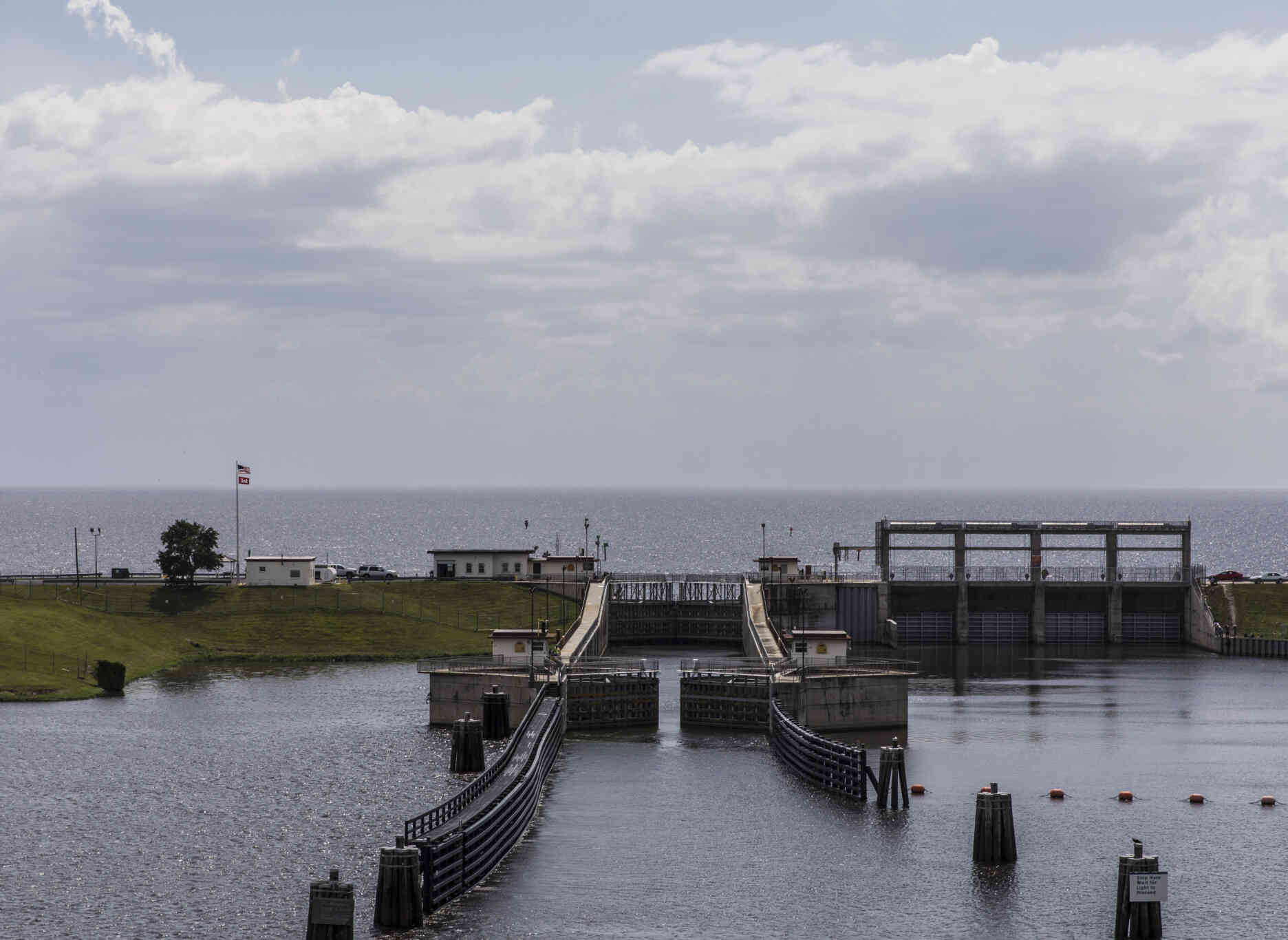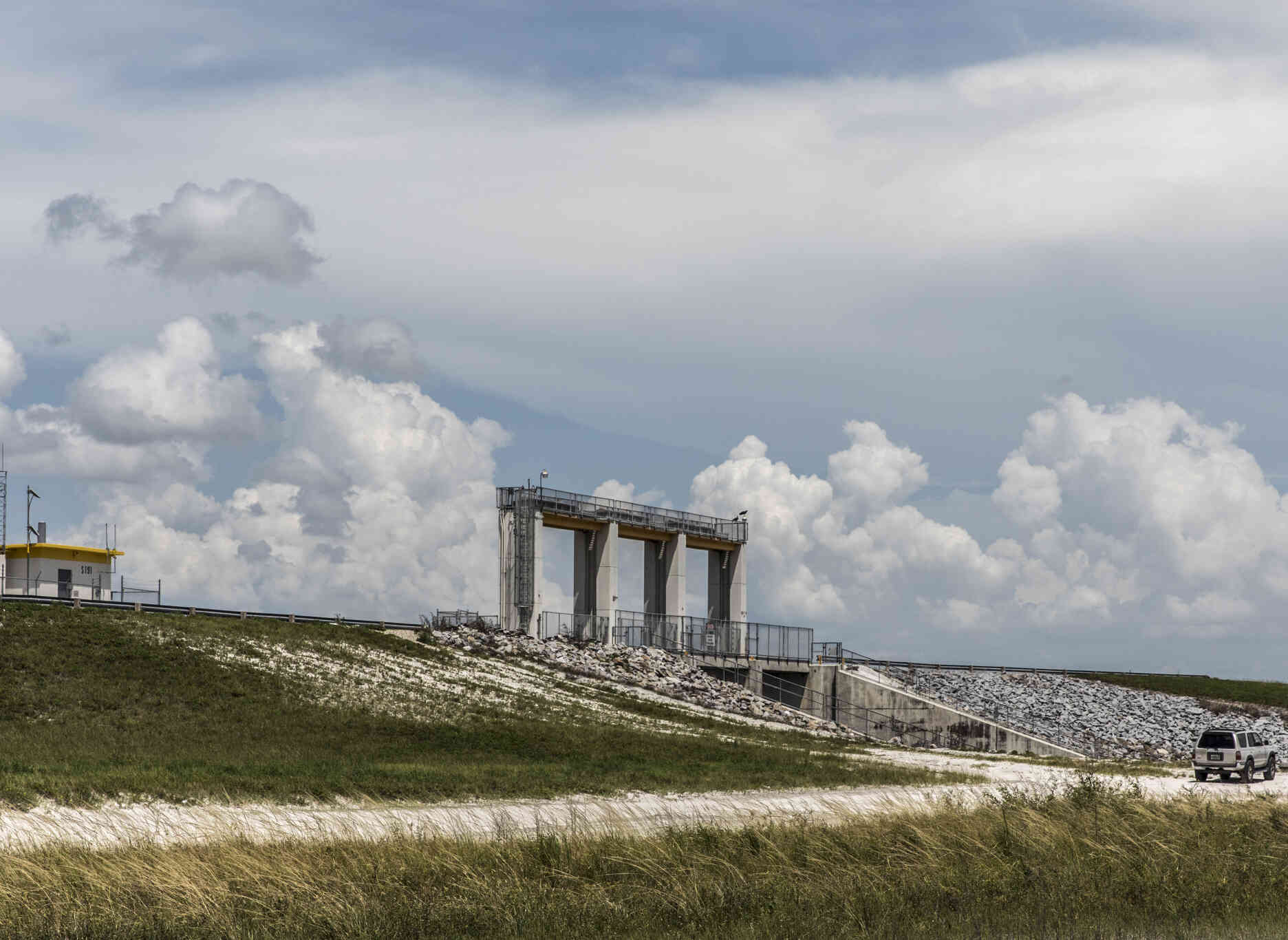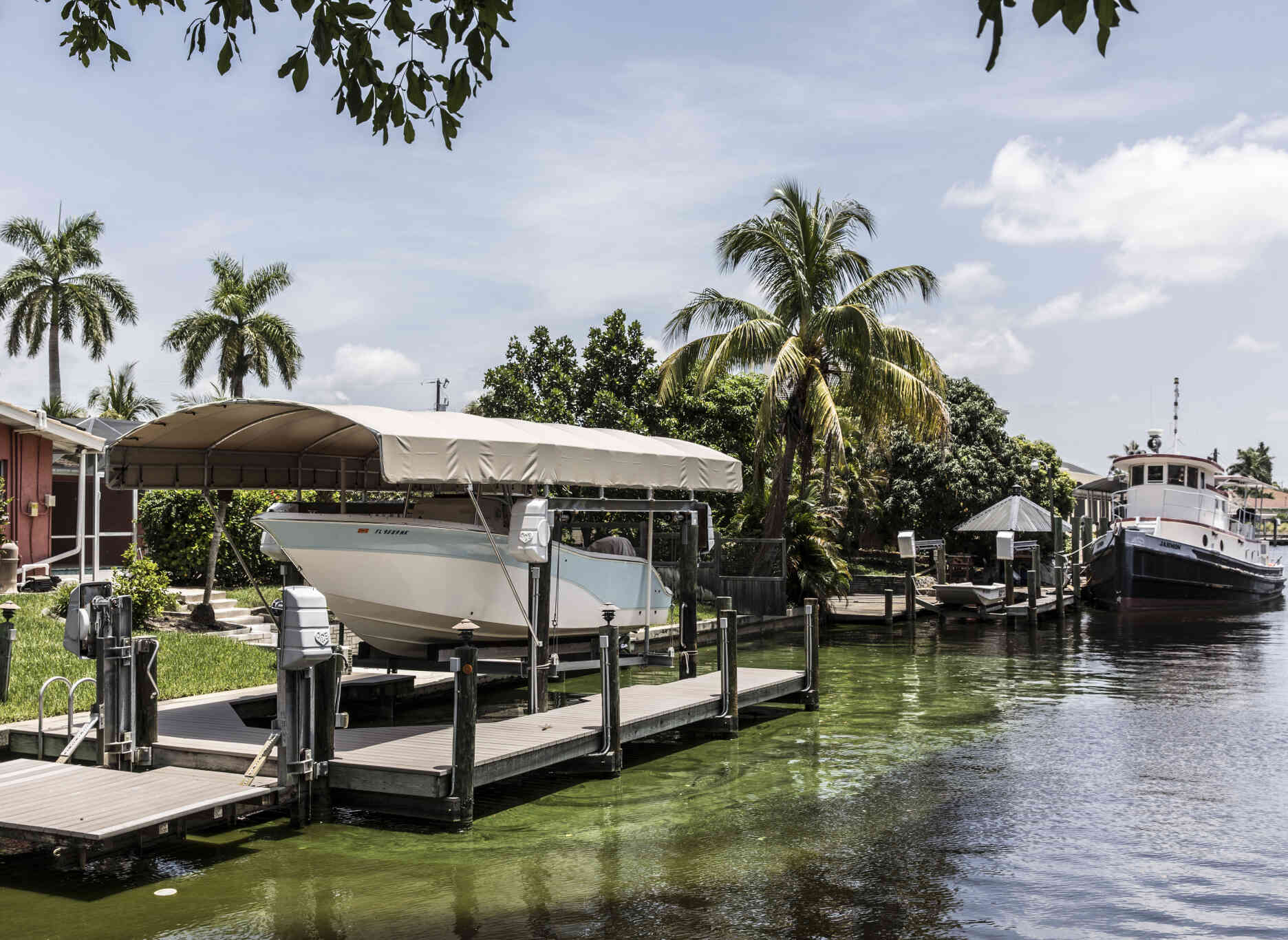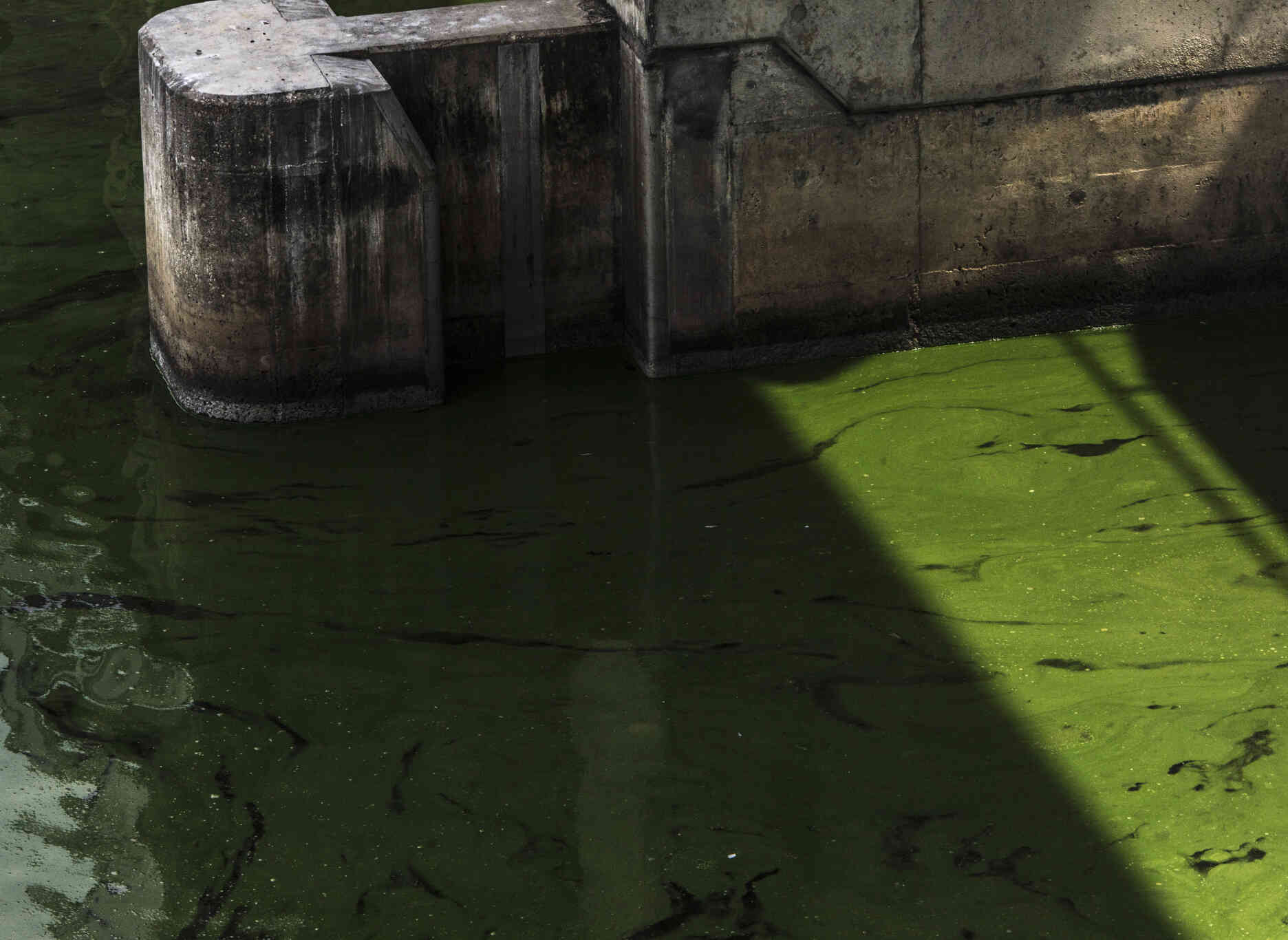Lake Okeechobee, fragile key of the Floridian ecosystem, USA
Sentinel-2 MSI acquired on 07 December 2019 at 16:05:09 UTC
Sentinel-2 MSI acquired on 15 December 2019 at 16:06:51 UTC
Sentinel-1 CSAR IW acquired on 17 December 2019 from 23:27:37 to 23:28:27 UTC
Sentinel-2 MSI acquired on 15 December 2019 at 16:06:51 UTC
Sentinel-1 CSAR IW acquired on 17 December 2019 from 23:27:37 to 23:28:27 UTC
Keyword(s): Lake, wetland, pollution, salinity, agriculture, biodiversity, Florida, United States, USA.
Lake Okeechobee lies an hour from Palm Beach, the Atlantic seaside resort for billionaires where the American president, Donald Trump, has his Mar-a-Lago golf course. Or one can reach it by driving for two hours through endless sugar cane plantations, leaving the Everglades National Park, the largest swamp in the United States, where alligators, mosquitoes and herons swarm near Miami.
Arnaud Leparmentier wrote an article for Le Monde published on 30 July 2018 where he deals with the threats to Lake Okeechobee and the whole Floridian ecosystem: "Lake Okeechobee is the key to Florida's ecological system. The future of the heavenly beaches, the seabed and above all the natural wealth of the Everglades, which is a UNESCO World Heritage Site, depends on it. The immense expanse of fresh water is the essential source of nourishment for this fragile ecosystem.
When you finally reach it, Okeechobee is not visible, surrounded by an immense dike. Fishermen are busy, but the serenity is deceptive. The lake does not go round in circles: one discovers a herd of manatees, these aquatic mammals which, in Florida, normally live in salt water. Worse, the water is highly polluted."
"Steve Davis, a scientist from the Everglades Foundation, hopes that the nuisances linked to the lake will soon be resolved. On July 10 2018, the White House authorized the construction of an artificial lake south of Lake Okeechobee. The goal: to clean up its waters and serve as a reservoir for the Everglades during the dry season." The Republican governor of the state, Rick Scott, greeted on Twitter the approval of 'this project that we are fighting for', hoping the the congress would agree on financing using federal funds.




Left: "At the beginning of the 20th century, a dike and a whole system of drainage and canals were organised to dry out the Florida marshes. The control of the lake made it possible to secure the economic development of this state, but modified the fragile ecosystems."
Right: "The lock, on the east side of the lake, which allows the overflow of water to be discharged into the Atlantic Ocean. This discharge disturbs the salt-freshwater balance of the coastline and causes, with its phosphates, the appearance of green algae."
Source: Christopher Morris for Le Monde.
Right: "The lock, on the east side of the lake, which allows the overflow of water to be discharged into the Atlantic Ocean. This discharge disturbs the salt-freshwater balance of the coastline and causes, with its phosphates, the appearance of green algae."
Source: Christopher Morris for Le Monde.
The article continues: "The artificial lake would be a posthumous consecration for George Barley, who launched with his friend Paul Tudor Jones the foundation to save the Everglades. That was already a quarter of a century ago. The two friends, wealthy entrepreneurs, were fishing in the shallow waters of Florida Bay, between the marshes of the continent and the Keys, a string of islets linked by bridges to Florida. Not a fish in their nets.
Furious at not being able to indulge their passion, but also at seeing the value of their property in Islamorada, an island for billionaires, plummeting, the two men tried to understand: the fish have disappeared, suffocated by algae. If the algae have proliferated, it is because the seaweed beds have died, victims of excessive salinity. And if the water in the bay is too salty, it is because it no longer receives fresh water from the Everglades."
Furious at not being able to indulge their passion, but also at seeing the value of their property in Islamorada, an island for billionaires, plummeting, the two men tried to understand: the fish have disappeared, suffocated by algae. If the algae have proliferated, it is because the seaweed beds have died, victims of excessive salinity. And if the water in the bay is too salty, it is because it no longer receives fresh water from the Everglades."
"One thing leading to another, the two men find the culprit, 250 kilometres further north: Lake Okeechobee, a freshwater inland sea. With a surface area of 1 890 km2 (three times that of Lake Geneva), it was surrounded by a dyke in the 1930s. Since then, the water no longer flows southwards. A phenomenon that specialists have been slow to notice, due to the very slow action of nature. 'It takes a year for the water to flow from a height of five metres to sea level,' says Professor Steve Davis."
"In 2000, Congress passed a major plan to restore the Everglades to its original hydraulic system. The estimate of its total cost doubled to reach 12 billion euros. But things are progressing slowly: what allowed man to conquer Florida in the first half of the 20th century must be undone.
The dam built in the 1930s was supposed to control Lake Okeechobee and promote Florida's economic development. The state, a refuge for Seminole Indians and fugitive black slaves in the early 19th century, became a resort area for New Yorkers in the early 20th century after a complex system of drainage and canals was put in place to drain the marshes. 'Water is the common enemy of the people of Florida,' declared Napoleon Bonaparte Broward, the state's 19th governor (1905-1909).
'Water control, much more than air conditioning, mosquito repellents or social security, has allowed the spectacular growth of South Florida,' recalls Michael Grunwald, in an article by Politico entitled 'Requiem for Florida, a paradise that should never have existed,' published during Hurricane Irma in the summer of 2017."
The dam built in the 1930s was supposed to control Lake Okeechobee and promote Florida's economic development. The state, a refuge for Seminole Indians and fugitive black slaves in the early 19th century, became a resort area for New Yorkers in the early 20th century after a complex system of drainage and canals was put in place to drain the marshes. 'Water is the common enemy of the people of Florida,' declared Napoleon Bonaparte Broward, the state's 19th governor (1905-1909).
'Water control, much more than air conditioning, mosquito repellents or social security, has allowed the spectacular growth of South Florida,' recalls Michael Grunwald, in an article by Politico entitled 'Requiem for Florida, a paradise that should never have existed,' published during Hurricane Irma in the summer of 2017."
"Except that Florida's first boom hit a real estate crash and two terrible hurricanes: one that devastated Miami in 1926 (370 dead) and then, in 1928, the Okeechobee hurricane. When the hurricane passed over the lake, which was surrounded only by a makeshift dyke, its waters were sucked up and overflowed, drowning the area underwater. In total, it was the second deadliest hurricane after the Galveston hurricane of 1900 in south Texas (8 000 dead) and before the New Orleans hurricane (Katrina) in 2005 (1 836 dead).
After being inspected by then President Herbert Hoover, the US Army Corps of Engineers went to work and surrounded Lake Okeechobee with a 10-metre-high dike to protect the southern part of the peninsula. Two diversion canals were added - one to the east, on the Atlantic coast, and the other to the west, towards the Gulf of Mexico - to evacuate the lake's overflow.", continues Arnaud Leparmentier.
After being inspected by then President Herbert Hoover, the US Army Corps of Engineers went to work and surrounded Lake Okeechobee with a 10-metre-high dike to protect the southern part of the peninsula. Two diversion canals were added - one to the east, on the Atlantic coast, and the other to the west, towards the Gulf of Mexico - to evacuate the lake's overflow.", continues Arnaud Leparmentier.
"At first the idea seemed ingenious, it drained the region, cleared land and developed agriculture, including extensive sugarcane plantations to offset the embargo on Cuba when Fidel Castro took power. But the affair soon turned to disaster. When arid, the Everglades dry up, while Florida Bay dies of excessive salinity; when there is heavy rain, water that accumulates in Lake Okeechobee in the east and west of the state has to be dumped. Ecosystems made up of a subtle balance of fresh and salt water do not withstand this.
Worse still, agriculture, which is a major consumer of fertilisers, has generated phosphate pollution of Lake Okeechobee, which has been made all the more severe by the fact that farmers have been allowed for decades to return the water that flooded their fields to the lake. As a result, the release of water on Florida's beaches causes the emergence of toxic green algae, which the inhabitants have ironically nicknamed 'guacamole'."


Worse still, agriculture, which is a major consumer of fertilisers, has generated phosphate pollution of Lake Okeechobee, which has been made all the more severe by the fact that farmers have been allowed for decades to return the water that flooded their fields to the lake. As a result, the release of water on Florida's beaches causes the emergence of toxic green algae, which the inhabitants have ironically nicknamed 'guacamole'."


Left: "For years, farmers have been allowed to return phosphate-polluted water from their fields to the lake. These water releases have generated toxic algae. A new alert is taking place in the Palm Beach area this summer, threatening the tourist season."
Right: "Green algae, nicknamed "guacamole" at the Port Mayaca locks on Lake Okeechobee."
Source: Christopher Morris for Le Monde.
Right: "Green algae, nicknamed "guacamole" at the Port Mayaca locks on Lake Okeechobee."
Source: Christopher Morris for Le Monde.
"In the absence of action, these issues have increased in recent years. After a year of drought, 2016 was marked by torrential rains. The lake's water, polluted with phosphates and nitrates, had to be released to prevent it from giving way. A dreadful sea of green algae with a pestilential odour poured out onto the Floridian coast. Finally, 2017 marked the return of the hurricanes. For the Americans, who are fond of biblical comparisons, these are in a way the three plagues of Florida: salt, guacamole and water.
No one escapes the disaster any more: not the tourists whose holidays were ruined by guacamole, not the fishermen prevented by salt, not the Everglades lovers desperate for drought, and even less the property developers worried about Florida's economic attractiveness.", adds the article.
No one escapes the disaster any more: not the tourists whose holidays were ruined by guacamole, not the fishermen prevented by salt, not the Everglades lovers desperate for drought, and even less the property developers worried about Florida's economic attractiveness.", adds the article.
"'We have a double problem to solve. The quality and quantity of water,' explains Melodie Naja, a scientist at the Everglades Foundation. In terms of quantity, Florida is trying to go back to the pharaonic constructions of the 20th century. To the north, a canal has to be destroyed, while a ten-metre deep wall is being built between Miami and the Everglades to ensure that the water stays in the swamps and does not flow towards the city. The road along the north side of the park is partially transformed into a bridge to let the water follow its course. In addition to this work, the reservoir south of Lake Okeechobee is being built. The land was purchased by the government, and funding has been secured under Florida law.
Part of the wall will be used to store the water; the second part will be used for pollution control. The matter is urgent because it is forbidden to release water to the south and the Everglades as long as it is polluted. Only US army engineers are allowed to do so when they empty the lake to the east and west, to protect people from the risk of overflow. To limit phosphates, the plantations south of the lake have been put under surveillance since the end of the 1990s, and are strictly controlled. But this is much less true in the north."
Part of the wall will be used to store the water; the second part will be used for pollution control. The matter is urgent because it is forbidden to release water to the south and the Everglades as long as it is polluted. Only US army engineers are allowed to do so when they empty the lake to the east and west, to protect people from the risk of overflow. To limit phosphates, the plantations south of the lake have been put under surveillance since the end of the 1990s, and are strictly controlled. But this is much less true in the north."
"How to clean up the water? 'We need new technology to treat it,' explains Melodie Naja. The foundation has launched a $10 million prize to find a system to decontaminate water and sludge. Out of one hundred projects received in 2017, about ten teams competed in Ontario to invent purification systems, chemical, organic, filtration, etc., for the treatment of water and sludge. In 2020, the four leading teams will test their systems in Florida.
In the meantime, Florida's wounds have been healed: water releases from Lake Okeechobee had to be carried out this summer, while the dikes are threatening to give way - $510 million worth of work is planned. Unsurprisingly, 'guacamole' has once again invaded the beaches of Palm Beach. To save the season, Governor Rick Scott declared a state of emergency, citing the danger of green algae. This is the only legal way to have the right to drain the water from the lake to the Everglades, so much the worse for the environment. Until the reservoir is finally built.", concludes le Monde.
In the meantime, Florida's wounds have been healed: water releases from Lake Okeechobee had to be carried out this summer, while the dikes are threatening to give way - $510 million worth of work is planned. Unsurprisingly, 'guacamole' has once again invaded the beaches of Palm Beach. To save the season, Governor Rick Scott declared a state of emergency, citing the danger of green algae. This is the only legal way to have the right to drain the water from the lake to the Everglades, so much the worse for the environment. Until the reservoir is finally built.", concludes le Monde.












